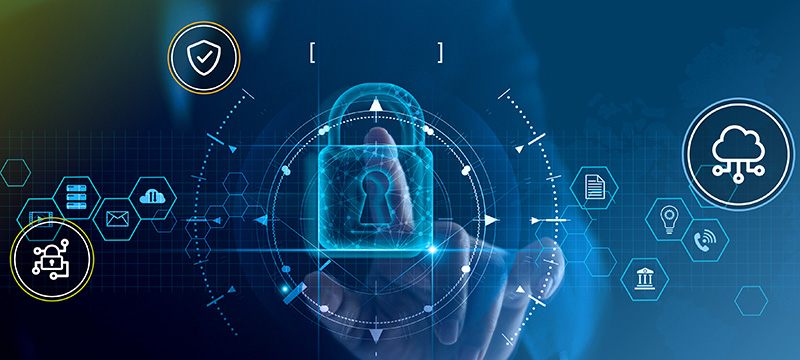
How to Enhance IoT Security with Cloud Infrastructure Entitlement Management


This year the IoT market is set to exceed $1.3 trillion, showing the scope of its reach. This growth brings a critical challenge in the form of having to provide secure access to these myriad devices.
Cloud Infrastructure Entitlement Management (CIEM) has the potential to do just that, so let’s talk over a few points and examples to explain what’s at stake and how integration can be achieved with as little disruption as possible.
The Role of Cloud Infrastructure Entitlement Management in IoT Device Authentication
In an IoT-obsessed world, every connected device becomes a potential entry point for malicious actors. This is why there was a 400% spike in malware aimed at IoT devices in particular last year. Robust authentication ensures that only authorized entities interact with these devices, mitigating these risks.
Imagine your home security system compromised by an unauthorized entity – it’s more than inconvenient; it’s dangerous. Similarly, industrial systems controlling sensitive machinery must guard against unauthorized interference rigorously.
Core Components of Cloud Infrastructure Entitlement Management
To understand how CIEM works in IoT environments, let’s break down its key components, which include:
- Identity and Access Management (IAM): IAM governs user identities and their access levels.
- Policy Enforcement: This establishes rules defining who can access what resources under specific conditions.
- Audit Trails: This keeps logs of all activities to track and respond to suspicious behavior promptly.
These elements collectively provide granular control over who can interact with each IoT device and how they do so.
Integrating CIEM into Your IoT Ecosystem
Bringing CIEM into your existing infrastructure requires strategic planning but offers significant payoffs in terms of security enhancements.
Steps include:
- Assess Current Security Posture: Evaluate your existing security mechanisms – and look for where vulnerabilities lie.
- Define Clear Policies: Develop precise policies detailing permissible actions for each role within the ecosystem.
- Deploy Automation Tools: Use AI-driven tools to automate policy enforcement and real-time monitoring.
- Regularly Update Policies: As new threats emerge, continuously refine access policies to stay ahead of attackers.
Let’s take the practical example of a healthcare provider using connected medical devices that communicate patient data across various platforms. In this case:
- Implementing CIEM allows administrators to define strict access controls based on user roles such as doctors versus administrative staff.
- Automating policy updates ensures compliance with evolving regulations like HIPAA without manual intervention delays.
Benefits Beyond Security
Enhanced authentication through CIEM doesn’t just thwart breaches – it streamlines operations by ensuring users have appropriate resource access without unnecessary restrictions impeding productivity:
- For businesses employing remote workers accessing smart office equipment
- For consumers utilizing interconnected home automation systems
As organizations increasingly integrate diverse IoT applications, from logistics tracking sensors in supply chains to consumer gadgets controlling everyday life, comprehensive management becomes more relevant with each passing day.
Challenges and Solutions for Managing IoT Permissions Across Multiple Platforms
IoT implementation can boost productivity by as much as 73%, but this comes at a cost. Namely it’s the fact that managing IoT permissions is hardly a cakewalk in the best-case scenario, and can be especially tricky when devices span multiple platforms.
As organizations diversify their tech stacks, it’s necessary to roll out cohesive and secure access control across these varied environments.
Key Challenges in Multi-Platform Environments
- Fragmented Security Policies: Different platforms often come with their own set of security protocols, creating inconsistencies.
- Complex Integration Processes: Integrating CIEM solutions across different operating systems and hardware requires significant effort and technical expertise.
- Scalability Issues: As the number of connected devices grows exponentially, maintaining efficient permission management strains existing resources.
- Compliance Requirements: Dealing with a laundry list of regulations complicates the process of ensuring all connected devices comply with standards consistently.
Strategies for Overcoming Fragmentation
Creating unified security policies is crucial. You might:
- Develop cross-platform policy templates that standardize entitlements regardless of the underlying technology.
- Employ middleware solutions capable of translating these standardized policies into platform-specific commands automatically.
So for example, a logistics company managing both traditional IT infrastructure alongside cutting-edge IoT-enabled tracking systems might use such templates to maintain consistency while still allowing flexibility for unique requirements on each side.
Simplifying Integration Efforts
Integration doesn’t have to be an insurmountable hurdle. It’s easier if you:
- Leverage APIs provided by CIEM vendors designed explicitly for multi-platform compatibility.
- Engage with third-party integrators specializing in custom deployments – this can save time and reduce potential integration pitfalls significantly.
Let’s imagine that you run an agricultural enterprise and you’re employing smart irrigation sensors alongside traditional ERP systems.
Using robust API frameworks enables seamless communication between newer IoT sensors collecting real-time data on soil moisture levels and legacy ERP databases. It’s this type of interoperability which is the crux of what’s necessary both for security and productivity.
The Bottom Line
The combination of IoT security and cloud infrastructure entitlement management is a natural one, and it doesn’t take an expert to see where the advantages lay. Now you know why it’s necessary to nurture this pairing, and how integration challenges can be overcome, your next move is to implement the right systems and solutions in tandem, and keep malicious actors at bay.
The post How to Enhance IoT Security with Cloud Infrastructure Entitlement Management appeared first on IoT Business News.
